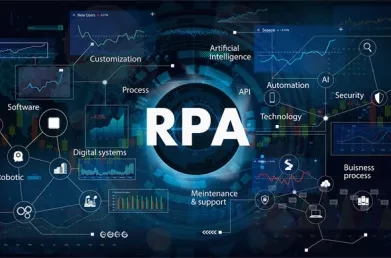Digital transformation: five principles for mid-sized organisations
Digital can be a bewildering and daunting subject for mid-sized organisations. Let’s consider some key principles for successful digital transformation projects.
Much broad impact innovation in the past decade or so falls into a category that has come to be termed “digital”. As is often the case with technology-driven hyperbole, “digital” is a loose and opaque term. Let’s consider it as the set of technologies and solutions that collects and connects an organisation’s experiential and operational data, enabling the agile delivery of uniquely targeted products and services.
Once upon a time we thought only in terms of back-office and front-office business processes, supported by transactional systems like ERP, HR and CRM. The operational transactions that flowed through each were about as far as we could get in terms of having a complete view of our customers, suppliers, employees, products, services and projects. Now the ability to collect a whole new set of experiential data is possible – and important – for many businesses. Whether it is real-time IoT sensor data from assets, connected products or production line machines, social sentiment from customer-reviewers, or omni-channel commerce patterns, the digital possibilities for gaining the edge on the competition – and simply keeping up with them – can be bewildering.
While larger companies may have the scale, budgets and expertise to push the digital envelope, mid-size companies, even those at the upper end of that description, often have much fewer resources with which to do so. But they still must compete, so it is even more imperative that their digital efforts are efficient and effective.

Let’s consider five principles to help companies pondering such daunting digital challenges:
Get your digital core in order
Digital, as we’ve defined it above, moves beyond the traditional back-office or front-office applications. However, most components of a digital architecture will rely on sound applications such as ERP and CRM. These platforms may be considered a digital core that will enable many of the business processes and customer journeys that digital solutions can extend. Mid-sized organisations may have treated these applications as overheads and they may have been neglected. They should now be optimised and modernised so that the various other digital components to be implemented can be connected to provide coherent and connected end-to-end processes.
Be clear about your goals
As with any investment you should be clear about what you are trying to achieve when embarking on a digital transformation programme or a series of digital projects. The variety of ways in which money and time can be spent, and wasted, is extensive. Rein this in by setting a clear focus and set of goals for the programme. Strategic decisions can then be aligned to achieving those goals.
Develop a strategy and roadmap
Aligned with those goals, your strategy should clearly identify the components of the overall digital solution and architecture and the appropriate solution types that will be required. What you need from a shopping list of digital enablers – from the internet of things to e-commerce, chatbots to product information management – will depend on your goals, scope, sector, scale and more. Your strategy should clarify this and prioritise it into a roadmap of projects that will connect step-by-step.
Walk first, then run
A sequential roadmap taken one step at a time can allow you to learn as you go and correct course as needed. The number of moving parts and vendors in a full-scope digital transformation can make for large and unwieldy programmes. Few mid-sized organisations have the project management or change management experience or capability to implement multiple digital transformation projects in parallel. A programme that builds on incremental project successes is more likely to succeed in the long run.
Don’t forget the transformation bit
Aside from potentially transforming your business, digital projects – such as large enterprise systems projects – will often require organisational transformation. Business processes will change. New processes, roles, areas of expertise, maybe even functions, will be required. Managing all of the organisational change that will be required to deliver “digital” is key to it succeeding.
Supporting all digital transformations is the solid Digital Core. ERP, CRM and related enterprise systems make up this core. Need to get your Core in order so that you can get Digital? For over 20 years Lumenia has been helping organisations plan for, procure and implement these solutions. Our independence, unrivalled experience and structured methodologies can help you navigate the journey to a sound Digital Core.
This article is adapted from an article that was originally written by Ian O'Toole, Consulting Manager, Lumenia. See the original article in the Business Reporter here.


